On November 2 Barbara and I flew from Cape Town to Windhoek, Namibia. We had arranged a 10-day private tour with Batis Birding Safaris. Batis is a family operation based in Swakopmund, operated by Steve and Louise Braine and their sons, Dayne and Sean. Steve was our driver/guide for our entire stay.
We arrived a day early and stayed at River Crossing Lodge between the airport and Windhoek. From our lodging we saw our first of the 9 antelope species that we saw in Namibia, a Common Duiker, which munched its way slowly past our back deck. Steve met us at the Lodge for dinner and the next morning we started the tour. We tried to locate the Orange River Francolins that inhabit the hillsides around the lodge, but with no success. While trying to locate the Francolins, however, we were treated to good looks at a Montiero’s Hornbill.
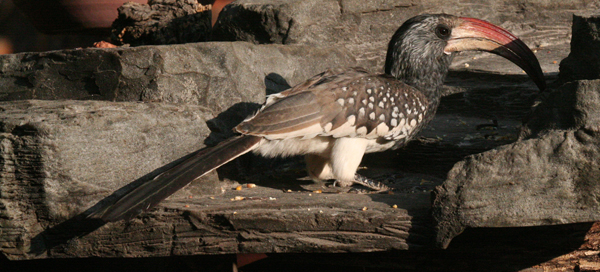
We followed up with a visit to Windhoek’s Sewage Treatment facilities. Namibia is in the midst of a 3-year long drought, and as a result many birds flock to any water they can find, even if it is a Sewage plant. The treatment ponds and environs were loaded with Egyptian Geese, South African Shelducks, South African Shovellers, Southern Pochards, Red-knobbed Coots, Little Grebes, and several species of Cormorants, Herons, Lapwings, Plovers, and Sandpipers. Southern Red Bishops were present in good numbers, but not yet dressed in the brilliant red plumage that was sported by their brethren that we saw in the Cape Town area. Wattled Starlings
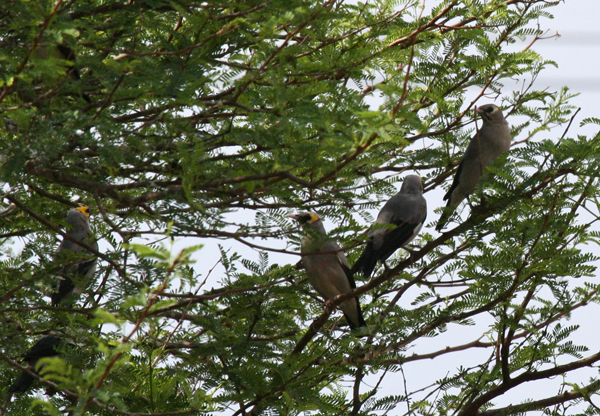
and White-throated Swallows were present in the hundreds.

Also skulking about the ponds was this Yellow Mongoose.
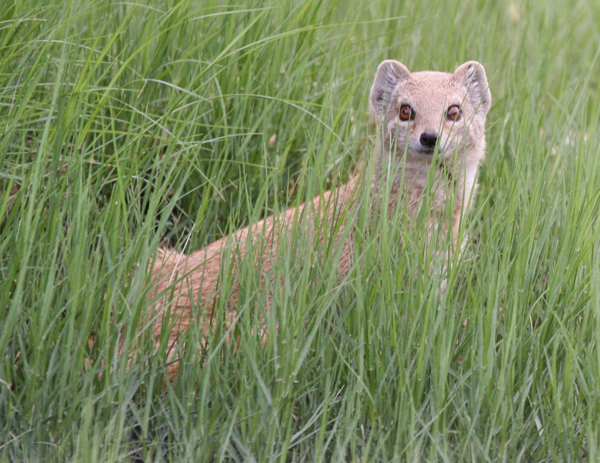
We then travelled south through the Rehoboth area, for our night’s lodging, the spectacularly sited Villas at Namib Grens.

Rehoboth is the center of the Baster community in Namibia. Many of the residents are descendants of the Dutch men and African women who settled the area 100s of years ago.
Following a nap to help us survive the afternoon heat, we explored the area and among the birds seen were a Short-toed Rock Thrush
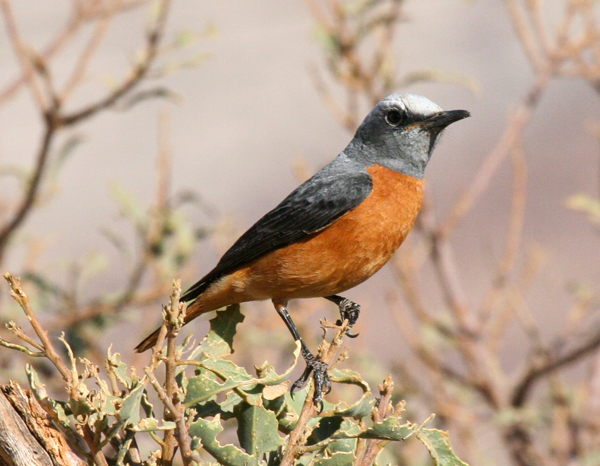
and a Groundscraper Thrush.
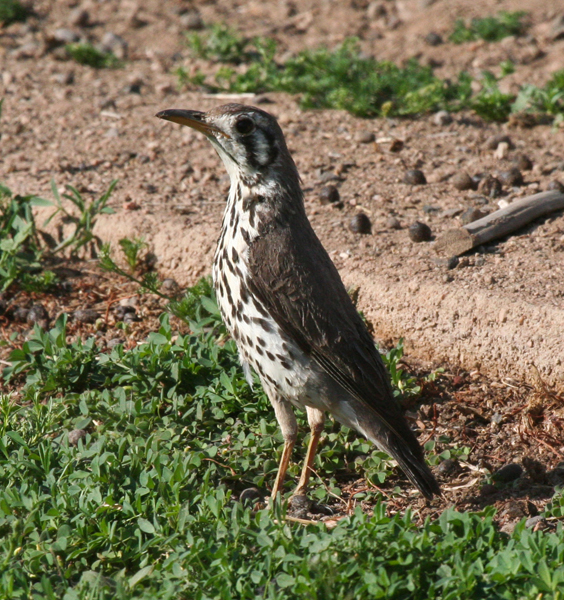
Day 2 of the tour found us on the Spreetshoogte Pass on our way to Hoodia Lodge where we spent the night. Along the road we saw many Sociable Weaver colonial nests, weighing down the host trees.
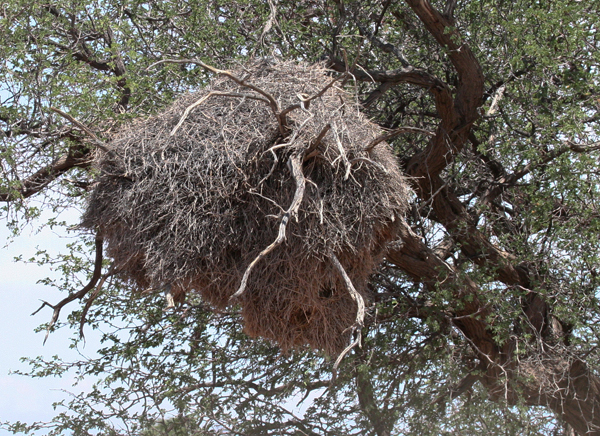
Also along the way were:
African Hoopooe

Southern Chanting Goshawk
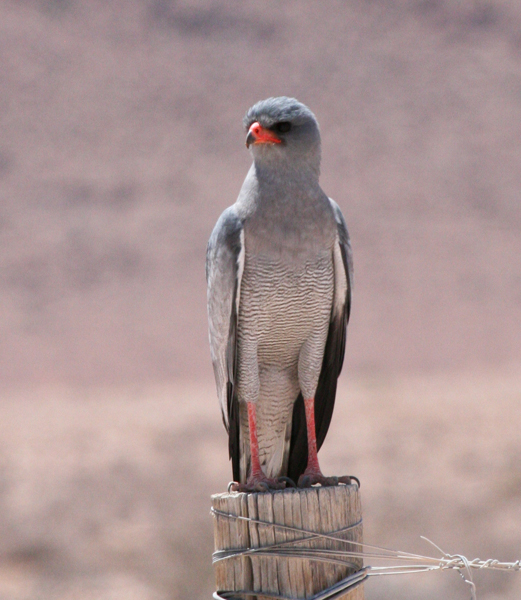
Sociable Weaver
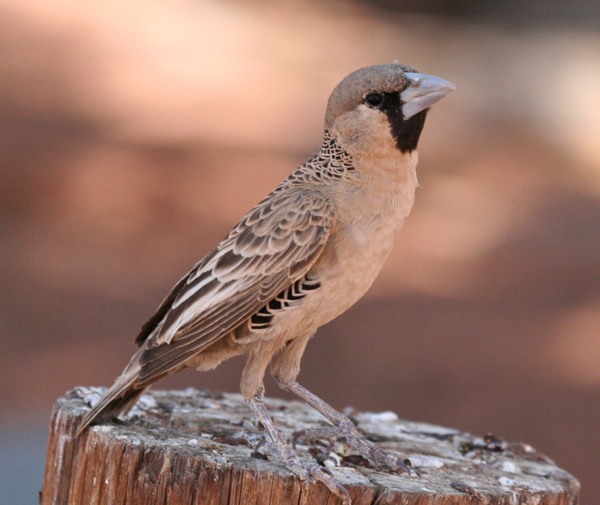
Ruppell’s Korhaans were sheltering from the blazing sun in the only shade available, a road sign.

And our first Klipspringer
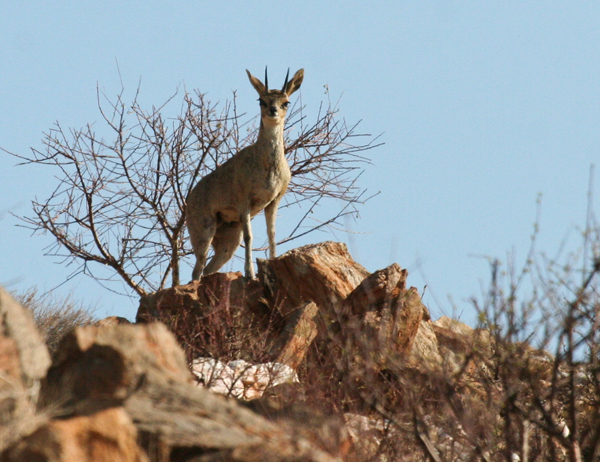
Day 3 was scheduled for photography of the Namib Desert dunes near Sossuvlei. We started very early to catch the sunrise, but the weather did not cooperate. The skies were cloudy for the first time in a long time. Nevertheless the photographs of the dunes that Barbara managed to obtain show why these dunes are the number 1 attraction for many tourists to Namibia. We walked in the dunes, which are of the color and consistency of ground cinnamon.

Dune Larks were the highlight of the morning. These lovely and entertaining little birds are the only true Namibian endemic species, found only in the Namib Desert.
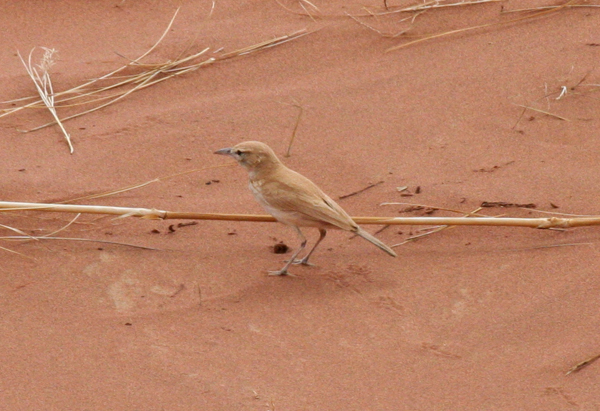
We left the dunes and travelled on toward Swakopmund. Along the way we saw Oryx

and, unexpectedly, a beautiful Cheetah, apparently sizing up its intended prey.

Ludwig’s Bustards were relatively plentiful.
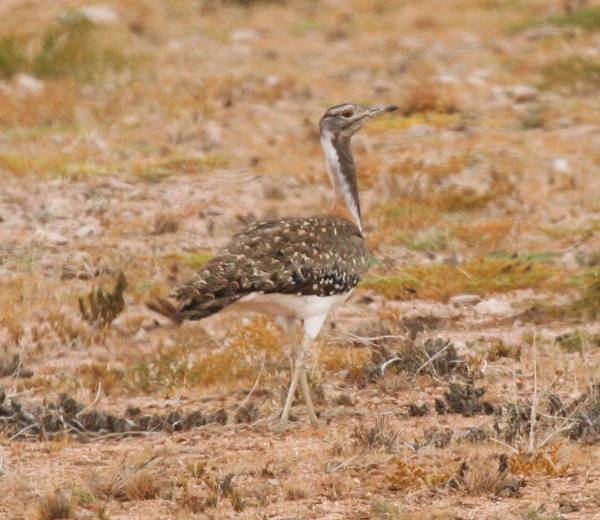
We arrived at Swakopmund and our Hotel Pension, our only Namibian double night stay. Louise joined us for an outstanding dinner at one of the nice Swakopmund restaurants.
Day 4 took us to Walvis Bay Lagoon on the Atlantic Ocean. Amazing numbers of Lesser and Greater Flamingos populated the waters of the Lagoon.
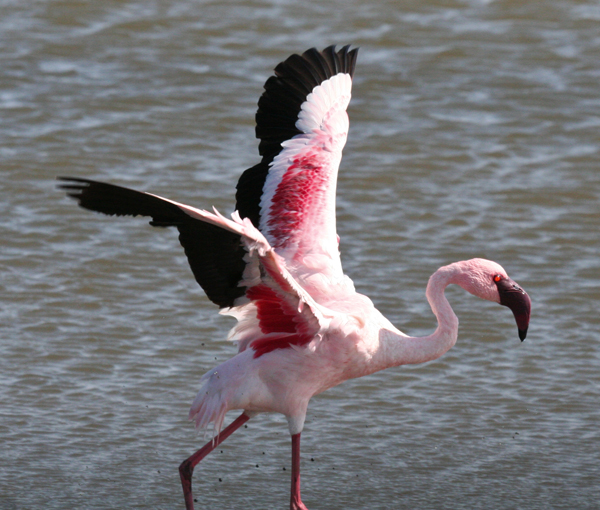
Many other water birds were seen, of most interest being:
Chestnut Banded Plover
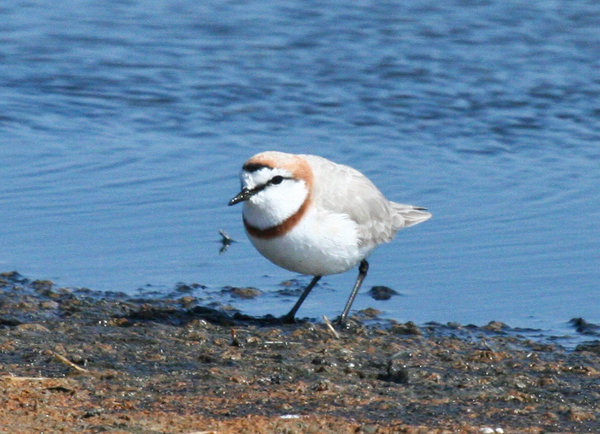
and White-fronted Plover

Diminutive Damara Terns flitted along the banks looking for small fish.
We saw a few Gray-headed Gulls.

We left the coast and drove inland to a drier area and there found several Gray’s Larks one of which alerted us to the presence of a Horned Adder curled up at the base of one of the scrawny desert bushes.
We closed the day with another pleasant dinner with Steve and Louise, and retired for the night at Hotel Pension, ready for an early start to Day 5 of our Namibian trip, November 7th.
